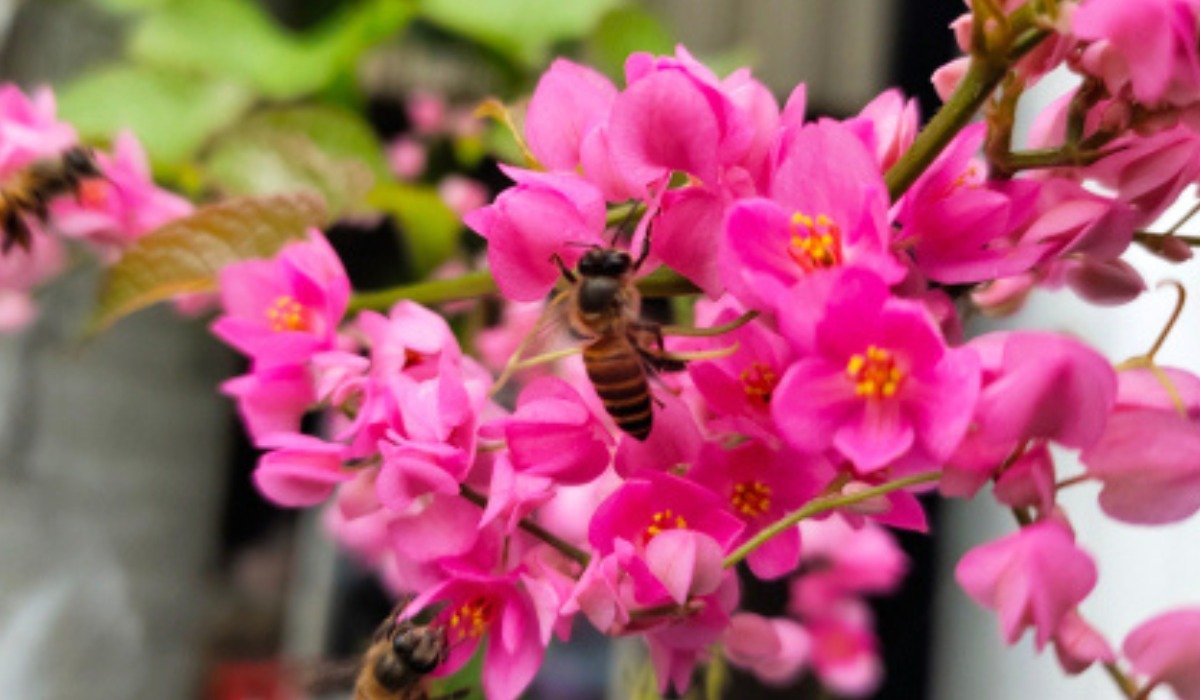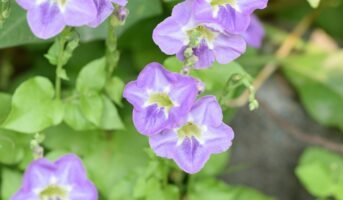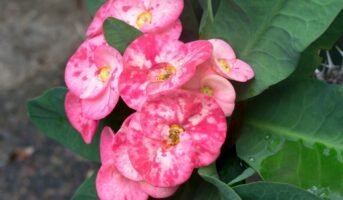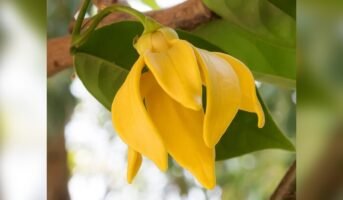Antigonon leptopus, also known as the coral vine, chain of love, Queen’s wreath or pink vine, is a fast-growing, tuberous-rooted, flowering vine with delicate pink, red, and white flowers that resemble lace.
This plant is native to the Mexican region and so is also known as a Mexican vine. Antigonon leptopus is sufficiently dense when grown on a trellis or arbour to provide shade on a hot day. It is typically found along coastal cliffs, roadsides, and tropical and subtropical areas.

Source: Pinterest
Antigonon leptopus: Key facts
| Common name | Coral vine, chain of love, Queen’s wreath, pink vine |
| Botanical name | Antigone leptopus |
| Family | Polygonaceae |
| Native to | Mexico |
| Bloom time | Summer to autumn |
| Height | 7-12 m |
| Soil pH | 6.1-7.8 |
| Category | Perennial |
| Water | Medium |
| Maintenance | Medium |
See also: Garden roses: Facts and tips to grow
Antigonon leptopus: Features
- This fast-growing, woody vine can live for decades and reach heights of 5-13 metres by employing tendrils at the tips of its inflorescence axes to scale vertical surfaces.
- The pentagonal, branched stems, covered with very fine hair, have multiple lateral extensions.
- The upper leaf surface is light green and slightly lustrous, with fine hair and deep venation.
- The underside of the leaf is pale green and dull, puberulent or glabrous, with conspicuous venation.
- Flowers are bisexual and can be found in either axillary racemes or terminal panicles, which are 10-20 centimetres in length.
- The fruit is a 5-8 millimetres long, 3-angled single-seeded fruit that is small and dry.
Antigonon leptopus: How to grow
- Antigonon leptopus grows well from seed, and its germination is relatively straightforward; unlike some flowering plants, it does not require pre-soaking or extensive preparation.
- Choose a location for your Antigonon leptopus that receives partial sunlight. Loosen the soil a little bit. Water the soil in the area or container of your choice until it is moist but not saturated. If the soil gets wet quickly, add perlite, sand, or organic matter to it to help it drain better while still keeping it moist.
- Place the seeds of the Antigonon leptopus in the moistened soil, so they are barely covered. If the seeds are planted too deeply, the Antigonon plant cannot develop.
- During germination, keep the soil moist by checking it daily and watering as necessary. Antigonon leptopus germination and emergence from the soil can take anywhere from 21 to 30 days.
- During the growing season, fertilise the Antigonon leptopus plant weekly with a general-purpose fertiliser for flowering plants. Once the plant is established, it can handle dry conditions better than it could when it was a seed.
- Regulate the growth of the Antigonon leptopus by constructing a trellis or other frame for it to climb. Antigonon leptopus uses tendrils to climb and can aggressively reach lengths of 30 feet or more if given a chance. Prepare a container with a well-draining soil mixture to start the seeds indoors.
Antigonon leptopus: How to maintain
Irrigation
For two weeks, new plantings should be watered daily. Depending on the weather and type of soil, the frequency of watering can then be reduced to every two or three days. Clay soils keep water longer than sandy soils, so places with more sand will need to be watered more often. In hot, dry weather, once a week is usually sufficient.
Fertilisation
When preparing beds for planting, incorporate fertiliser into the soil. Feeding established plants in early spring and again at the midpoint of the growing season is recommended. Avoid fertiliser application late in the growing season. This stimulates new growth that is vulnerable to early frost damage.
Pruning
To maintain a manageable size, cut back the Antigonon leptopus annually late in the winter or earlier on in spring and again in the summer. A simpler option is to prune the plant to the ground each spring. It won’t take long for it to recover.
Insects, pests, and diseases
There are no significant pests or diseases that affect the vine. Caterpillars could cause damage to the plants by eating the foliage.

Source: Pinterest
Antigonon leptopus: Uses
Edible
You can eat the tuberous root raw or cooked. They are said to have a nut-like flavour. The seeds could be made into fried cakes by boiling them.
Medicinal
Anti-thrombin, analgesic, anti-inflammatory, anti-diabetic, and lipid peroxidation inhibitory activities were all demonstrated by plant extracts. Hypertension, diabetes, the flu, and painful menstruation can all be alleviated by drinking tea made from the leaves. Leaves are used for cough and throat constriction treatment.
Antigonon leptopus: Toxicity
The plant is not known to be dangerous or toxic at all.
FAQs:
What are the advantages of Antigonon leptopus?
It can treat diabetes, pain, colds, swelling, wounds, etc.
What kind of creatures are drawn to the Antigonon leptopus?
Butterflies, bees, and other pollinators are attracted to the flowers' profusion and beauty.
Housing News Desk is the news desk of leading online real estate portal, Housing.com. Housing News Desk focuses on a variety of topics such as real estate laws, taxes, current news, property trends, home loans, rentals, décor, green homes, home improvement, etc. The main objective of the news desk, is to cover the real estate sector from the perspective of providing information that is useful to the end-user.
Facebook: https://www.facebook.com/housing.com/
Twitter: https://twitter.com/Housing
Email: [email protected]











